This website uses cookies
This website uses cookies to enable it to function properly and to analyse how the website is used. Please click 'Close' to accept and continue using the website.


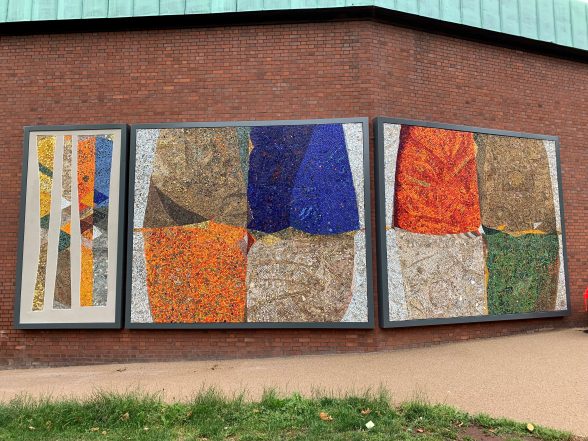
A threatened mosaic mural at the University of Manchester – Hans Tisdall’s ‘The Alchemist’s Elements’ (1967), previously highlighted in C20’s Mural Campaign – has been restored and successfully relocated to a new position on the campus.
The mural was originally installed within the entrance of the Faraday Building on the University of Manchester campus. Designed by architect Harry Fairhurst, of the long-established Manchester firm of H. S. Fairhurst & Son, it housed the University’s chemistry department from its opening in 1967 until 2007. The artwork consists of two large panels measuring approximately 4.5m in width and 3.8m in height, and a third smaller panel made up of three individual vertical strips, with abstracted shapes of colourful glass, ceramic and marble tesserae.
As part of the redevelopment of the North Campus area, the building was closed in 2015 and partially demolished in 2016. The mural panels were removed and temporarily stored in the old Faraday yard until a new location could be found.
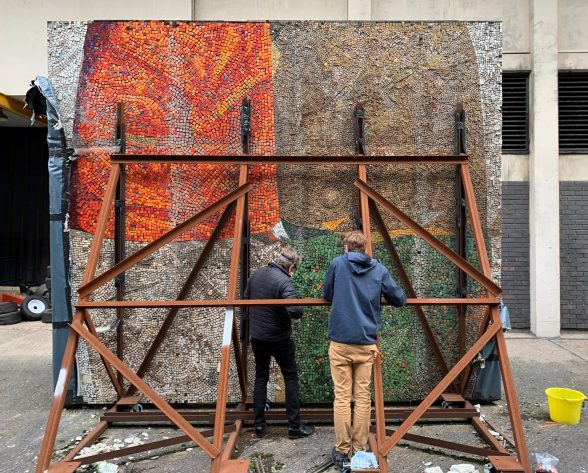
In late 2022 the artwork was re-sited on the exterior facade of the Schuster Building (Manchester Physics Building). Appropriately it now faces another another Tisdall mural of a similar age in concrete, stone and mosaic, on the adjacent Chemist Building.
Conservation works to the mural were undertaken by specialist firm The Mosaic Restoration Company. Director Gary Bricknell shares the delicate processes involved:
‘The project was challenging given the rather unusual fixing method of adhering tesserae direct onto cement backing boards with a bitumen mortar. This fixing method presumably gave the artist working time to consider, then place the tesserae onto the backing panels while creating the installation. The mortar also accommodated the varying types and thickness of material used to construct the design.
Our works included the initial recording and documentation of the mosaic works and conservation / reconstruction once fixed in their new location. Our initial thorough cleaning process determined any vulnerable tesserae, which could be re-fixed in their original location. Any shortfall in; glass, ceramic and marble tesserae was made up using our stocks of salvaged material and new to match the original type, colour, shape and size. The project took approximately a month on site to complete.’
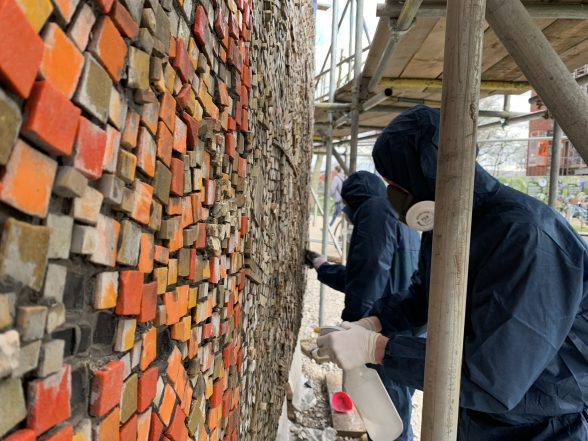
Launched in 2009, C20’s Murals Campaign is one of our longest running and most successful initiatives. In the past year alone, national listing was secured for 6 significant postwar murals across the country:
There was further good news with confirmation that Alan Boyson’s listed ‘Three Ships’ mural in Hull would be incorporated into the new Albion Square development, and a threatened Joyce Pallot and Henry Collins mural in Colchester was saved from probable loss due to redevlopment.
To alert C20 to any threatened murals in your area, contact caseworker@c20society.org.uk
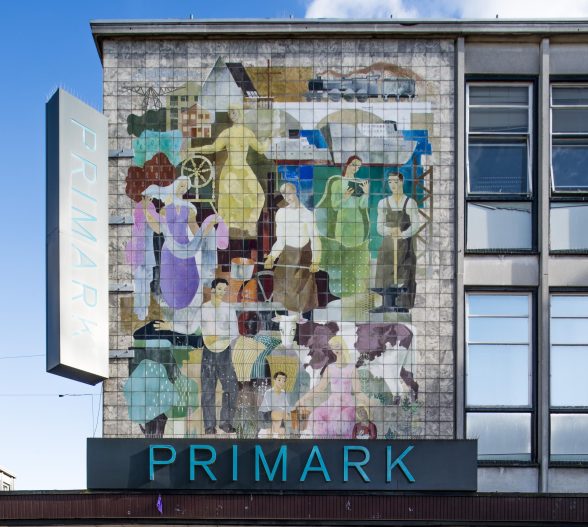
Image: Elain Harwood
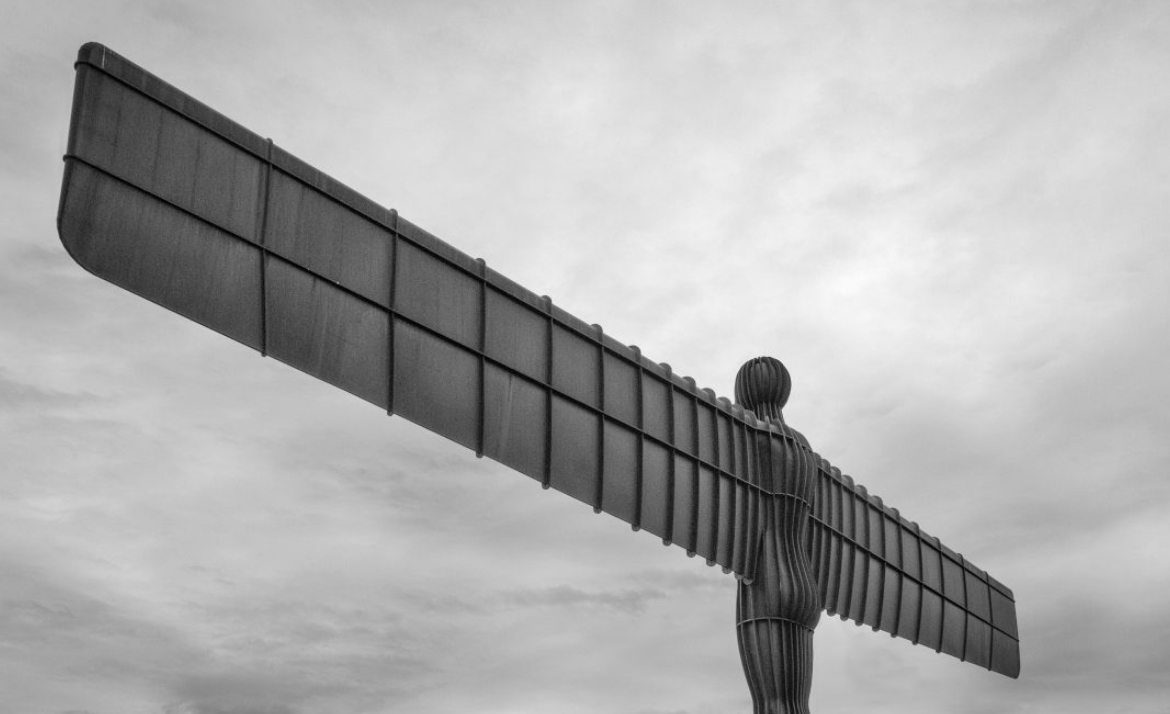
Become a C20 member today and help save our modern design heritage.